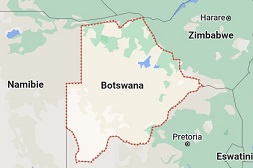The International Monetary Fund (IMF) says Botswana’s economic growth is expected to slow to 3.8 percent in 2023 from 5.8 percent in 2022 “due to the projected decline in diamond production and the weaker global environment”.
Growth is forecast to rebound gradually in 2024 and 2025, to above 4 percent, due to higher prices and quantities of diamonds produced, according to the statement the IMF released today. It stated that inflation is projected to revert to and remain within the central bank’s objective range.
In the statement issued today after its Executive Board concludes 2023 Article IV consultation with Botswana, thre IMF indicated that the Botswana authorities plan a fiscal expansion in FY2023 followed by two years of substantial fiscal adjustment to reach a small fiscal surplus by FY2025. “Together with a gradual recovery in diamond production and prices, FX reserves are projected to stabilize at 5 ½ months of imports over the medium term. The outlook remains heavily dependent on demand for diamonds and the global economic cycle,” it said.
The statement recalled that the economy of Botswana grew almost 12 percent growth in 2021. “The ongoing recovery from the pandemic primarily reflects elevated mining production. Inflation has declined sharply since August of 2022. After declining in 2022, FX reserves have stabilized and remained at adequate levels at end-2022. The unemployment rate remains elevated at
25 percent,” it said.
“…As outlined in the Financial System Stability Assessment (FSSA), the financial sector appears broadly sound, stable, and resilient. However, it is essential to monitor contagion risk from banks to non-bank financial institutions due to the concentration of large non-bank deposits. Banking supervision should be further enhanced on the basis of a risk-based framework and data gaps closed for requisite calibration of macroprudential tools.”
“The crisis management and safety net framework has been strengthened significantly with the introduction of a deposit insurance scheme. The Financial Stability Council should play an important role in developing and coordinating a comprehensive framework for crisis management and resolution,” IMF stated.
“…Directors agreed with the thrust of the staff appraisal. They welcomed Botswana’s prudent macroeconomic policies and strong recovery from the pandemic, but also highlighted the continued decline in external and fiscal buffers and the expected depletion of diamond reserves in coming decades. They noted the slowdown in economic activity this year and risks to the outlook, which include commodity price volatility and a sharper global slowdown. Directors welcomed Botswana’s robust capacity development strategy,” the IMF indicated in its executive board assessment.
In Botswana country report the IMF released today it is stated that total state owned enterprises (SOE) assets amounted to 32 percent of GDP in 2021. “Financial SOEs account for 14 percent of total assets, comprised of the Botswana Development Corporation (BDC), National Development Bank (NDB), Botswana Stock Exchange (BSE), and Botswana Savings Bank (BSB). The largest non-financial SOEs are Botswana Power Corporation (BPC) and Water Utilities Corporation,” the IMF country report stated.
“…Of this total, 42 parastatals are fully financed by the state, whereas 20 are revenue-generating (also referred to as SOEs in the rest of the paper) and operating commercially, but typically with
some fiscal support. The 20 SOEs comprise 16 non-financial and 4 financial corporations. Government is usually the only shareholder, except for Botswana Stock Exchange (BSE) at 76 percent government shareholdings, Botswana Telecommunications Corporation (BTCL) at 51 percent, and Banyana Ltd. as a joint venture,” said the new IMF report on Botswana.
